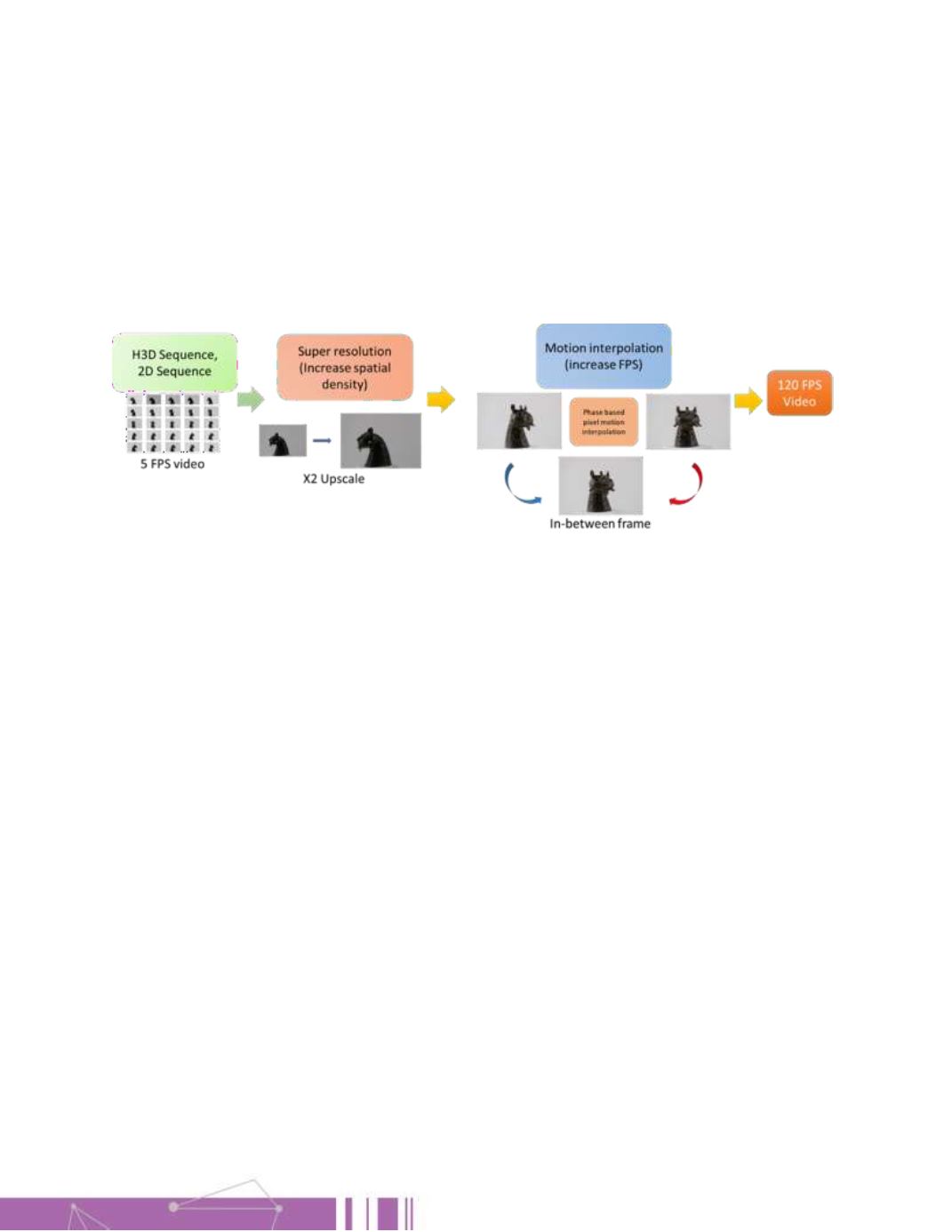

37
Visual Quality Improvements for H3D and 2D Content
To validate the cost-effectiveness claim (important criteria in our project), mitigating the hardware limitations through software tools
became primordial. The H3D imaging framework, which is currently using commercial cameras, suffers from the low spatial density
of commercial CMOS sensors. We have developed a framework based on image super-resolution and video motion interpolation
to mitigate these limitations. The 360-video scenario is our primary focus. We are using still captures of 40 megapixels spaced by
5° (72 pictures for complete 360). The in-between frames are then computed by a deep-learning based approach, mainly intended
to enhance the smoothness of the playback (increased from 5FPS to 120 FPS) with minimal glitches.
Figure 4. Visual Content post-processing frameworks
The project has received support from the Qatar National Research fund (CEPROQHA - NPRP 9-181-1-036). Some Qatar
University faculty, research assistants, and graduate students are involved in the project including, Dr. Loay Ismail, Dr. Abdulaziz
Al-Ali, Dr. Ali Jaoua, Abdelhak Belhi, Houssem Gasmi, and Nesreen Jboor.
















